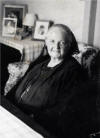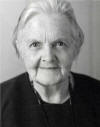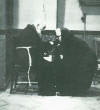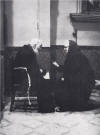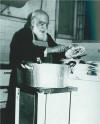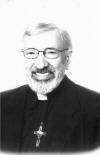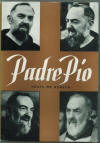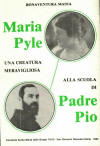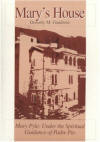9
Mary Pyle “Maria l’Americana”
Adelia Mary McAlpin Pyle "Maria l'Americana"
The life of Mary Pyle can be divided in two parts.
The first part started in 1888, with her birth in New York City, and developed mostly in the New World.
The first part ended at the age of 35, when she met Padre Pio in San Giovanni Rotondo on October 4, 1923.
The second part was lived in the Old World, near the Capuchin Convent in the little village of San Giovanni Rotondo, for 45 years, and ended with her death in 1968.
Part One: United States of America.
Summary: Mary Pyle was born Adelia McAlpin Pyle in New York City, NY, on April 17, 1888. Her family was very wealthy.
James Pyle, Mary's grandfather on the father's side, had invented a brand of soap that became very popular in America at the time.
James Tolman Pyle, Mary's father, expanded further the soap business, building a factory ten times larger than the previous one. The ''JAMES PYLES PEARLINE SOAP" became even more popular. An impressive advertising campaign brought the brand to the attention of every household. The brand was later brought by Procter & Gamble.
David Hunter McAlpin, Mary's grandfather on the father's side, was a prominent tobacco industrialist, with the brand "VIRGINIA LEAF". He was also a real estate owner in New York City. David H. McAlpin built in NYC the McAlpin Hotel. at the time it was "The largest hotel in the world".
Mary had four brothers and one sister.
The Pyle family lived in a city home at 673 Fifth Avenue, in midtown Manhattan, New York City, and in a custom built country residence they named "Hurstmont". Hurstmont had 35 rooms, 9 full baths, an elevator, 8 servants, a large garden and a backyard.
Mary attended the exclusive Chapin school, and the Masters School in Dobbs Ferry. She learned music, dance, voice, and the art of teaching. She had live-in private instructors of foreign languages, and became fluent in Italian, Spanish, and German. She attended the most exclusive social events in New York.
In 1913 Mary joined Dr. Maria Montessori and became her interpreter, collaborator, associate and confidante. They traveled extensively visiting schools adopting the "Montessori Method". Mary converted to Catholicism in Spain, visited Padre Pio in San Giovanni Rotondo, and decided to leave Montessori and live permanently near the convent.
Sections: James Pyle, James Tolman Pyle, David Hunter McAlpin, Birth and Baptism, "Hurstmont", Social Dance, Schooling, Dr. Maria Montessori, Conditional Baptism, Passport.
James Pyle, Mary's grandfather, born in Nova Scotia on August 16, 1823, emigrated to New York City in the 1840's, where he started a soap business.
Pyle initially patented his soap "O.K. Soap" and placed an ad in the New York Times, October 23, 1862, which refers to James Pyle's O.K. Soap.
The ad states "He was the first to utilize in advertisements the letters 'OK' in their business significance of 'all correct'."
The "Word Mark" of "Pearline" was used for "washing compounds and soap powder" and was first used in August 1877.
The filing date for the trademark wasn't made until November 21, 1899.
The Pearline trademark was renewed by the Procter & Gamble
Co. in 1946, and by the Hewitt Soap Company in 1983.
James Pyle died on January 20, 1900, at his home at 215 West 45th Street, New York City.
His two sons took over the business. However, it was not to last much longer.
William Scott Pyle died at the age of 49 on January 1, 1906.
James Tolman Pyle, Mary's father, took over the business.
In 1907, James Tolman Pyle, Mary's dad, built a new factory on the New Jersey side of the Hudson River, opposite 98th Street, in New York.
Four large buildings, connected with covered passageways were built on four acres of land.
The advertisement shows the confidence of Mary's father that the company had in its future: "Capacity Increased 10 Times"E'
Advertisement for the JAMES PYLE'S PEARLINE soap.
Some few of the many ads:
James Tolman Pyle, Mary's father, died at the age of 56 on February 8, 1912, in his office at 436 Greenwich Street in Edgewater, NJ.
About two years after his death, Procter & Gamble bought the rights to Pyle's Pearline, supposedly saving the company from bankruptcy.
David Hunter McAlpin was a prominent industrialist and real estate owner in New York City
David H. McAlpin had a very successful business in the tobacco industry, he called it "Virgin Leaf"
David H. McAlpin built in NYC the McAlpin Hotel, dubbed "The largest hotel in the world"
Obituary for David H. McAlpin in the New York Times, February 9, 1901
Frances Adelaide McAlpin (sometimes spelled McAlpine), Mary's mother, was the only daughter of David H. McAlpin, who had nine children.
She was born in 1860.
Mary's parents, James Tolman Pyle and Frances Adelaide McAlpin were married on February 12, 1884, at 673 Fifth Avenue, Manhattan,
the home of the bride's father David Hunter McAlpin.
The newspaper announcement is from page 5 of the February 13, 1884, New York Daily Tribune.
David H. McAlpin gave the newlyweds one of the parcels of land adjoining Glen Alpine, in 1886.
The area where the former McAlpin and Pyle houses currently sit was originally part of Morris Township, 1740-1866.
When the southern part was set off as Passaic Township, 1866-1922. In 1922, the northern part of Passaic Township was set off as Harding Township.
(Future Mary Pyle)
Birth certificate with no name yet April 17, 1888;
Born at her grand parents’ town house in Manhattan, 215 West 45th St. NY,NY.[2] [3]
Mary Pyle was from a wealthy Protestant
and socially prominent
family.[4]
Baptism certificate of Adelia: September 15, 1888
Church of the Covenant
She was baptized at the Church of the Covenant, a Presbyterian church of which her mother was member.[5]
Mary, with her little sister Sarah was the flower girls at the wedding of her uncle David Hunter McAlpin with Emma Rockefeller in 1895. The very large wedding was celebrated at the Rockefeller estate in Tarrytown, New York.
The McAlpin Pyle family
James Tolman Pyle and Frances Adelaide McAlpin had six children born between 1884 and 1901.
Adelia (future Mary Pyle) was the third child.
Adelia had one younger sister, Sara, and four brothers: James, David,
Gordon, and Charles.
Homes
The family lived in a city home and in a country residence they named "Hurstmont".
City home
The city home was at 673 Fifth Avenue, in midtown Manhattan, New York City.
Mary lived here with her parents, four brothers, one sister, and eight
servants.
The building today with Fendi and other stores,
is located across the street from the St. Thomas Episcopal church.
Country home "Hurstmont"
The family had a large country residence in Morristown, NJ, on a 15000 square feet parcel of land.
It had 35 large rooms, 9 full baths and an elevator.
The residence was designed by the architect Stanford white (right, in the picture), of the famed New York based architectural firm Mc. Mead and White.
The gardens were designed by the architect D. W. Langton charter member of the American Landscapers Association
The extraordinary home was featured on the June 1907 cover issue, with ample description in several pages inside, of the "AMERICAN HOMES AND GARDENS " magazine:
The home was also featured on a postcard.
When Sara McAlpin Pyle, Adelia's (Mary's) younger sister turned 18, her parents gave a
"dance at Sherry's for their debutant daughter and also for their elder daughter Adelia McAlpin Pyle",
as reported by The New York Times.
Adelia McAlpin Pyle
More than 200 guests took part at the dance and dinner. Dance started at 9 PM, and dinner at midnight.
Menu, one of the dining rooms, and the ballroom of Sherry's.
Sherry's was the largest, most elegant and expensive restaurant in New York City, owned by Louis Sherry,
located in the Hotel Netherland, affiliated with the Waldorf-Astoria.
While she was still a child, the family was invited to social gatherings
in the home of the president of the United States, Calvin Coolidge.
Rina Santovito: “Maria told me that in her house in America she had
three concert pianos at her disposal, and that she had not wanted to
learn to play that instrument.”
As a young girl Adelia and her family associated with the best society
in New York, and attended the most elegant balls. Later in life, when
her feet ached, she would say: “This is in reparation for all the
dancing I did.”
School
Exclusive Chapin and Masters schools
Adelia attended the Chapin School and the Masters School in Dobbs Ferry, New York. (Gau74, 82)
Adelia was fluent in Italian, Spanish and German.
For foreign language instruction, a tutor would come to live with the family, and Adelia was not allowed to speak anything but the language to be learned. Rather than having her attend a university, her mother sent her to finishing schools to learn music, dance, voice, and the art of teaching.
As a young adult, she attended the best social balls in New York, and became an avid horseback rider. One of the family maids, who was an Irish catholic, befriended Adelia, and on occasions the two of them would attend Mass at the maid's Catholic parish. Her mother put an immediate end to this when she found out, since to her, Roman Catholicism was not a socially acceptable religion.
Even though she attended the Chapin School and the Masters School in
Dobbs Ferry, NY, when her parents decided that it was time for her to
learn a foreign language, they hired a private tutor of that language,
who came to live in the same house with the family. Only the language
that she was learning was spoken until she learned to speak it
correctly.
Rina Santovito: “Maria told me that in her house in America she had
three concert pianos at her disposal, and that she had not wanted to
learn to play that instrument.”
Montessori
Dr. Maria Montessori
In 1912, when Adelia was twenty three, her father passed away. Her mother Adelaide become quite immersed in the work of Maria Montessori, the first female physician licensed in Italy. She had developed a new method of pedagogy for young children. Adelaide established the Montessori Education Foundation in New York, in order to found schools in America that would be based on the Montessori Method. Adelia's mother encouraged he go to Rome and meet Maria Montessori.[7]
Adelia traveled to Europe many times during her adolescent years. On one
occasion she met Maria Montessori. Adelia resided in Rome from 1912 to
1913 in the home of Maria Montessori to study with her. Then she
returned to the United States.
In 1913 Maria Montessori held at her home in Rome the "First International Course on Montessori Method". Adelia McAlpin Pyle and other Americans participated in the course. The students were from seventeen different Countries.
After the course Adelia stayed with Montessori and became her interpreter. In addition to interpreting for her, she become a trusted collaborator, associate, and confidante. In 1914-5 they visited several American cities, presenting the Montessori Method.
Mary Pyle (standing far right in the picture), Helen Parkhurst, Maria Montessori and her son Mario,
in the Montessori school in San Francisco, at the 1915 Panama Pacific Exposition.
Catholic conditional baptism
While in Europe Adelia spent much of her free time visiting Europe's magnificent Catholic cathedrals and Marian shrines.
It was while praying at this church
that Adelia Pyle finally decided to become a Catholic, and she began
taking instructions from the Jesuit Fathers. Arrangements were made for
her to be baptized conditionally al the shrine by a Jesuit priest. But
for some inexplicable reason, in spite of her indebtness to the Jesuits,
Adelia decided to have the ceremony performed by a Capuchin. She
had no explanation for this request, and did not know herself why she
made it. The date of the rite is uncertain. Adelia chose "Maria" as her
baptismal name.
[6]
During the ten years that she spent traveling with Montessori through
various countries of the world, and through the various cities of
Europe, Adelia became fascinated with the Roman Catholic faith,
especially the devotion to the Eucharist and to the Most Holy Mary.
While in Barcelona, Spain, she frequented daily the Sanctuary of our
lady of Montserrat.
In Barcelona Adelia was instructed in the Catholic faith by a Jesuit
Father.
In 1913, at the age of twenty five, she was conditionally baptized by a
Capuchin friar, and assumed the baptismal name of Maria.
Maria Montessori was also very religious. Although they were constantly
traveling, the two Maria never failed daily attendance at Mass and Holy
Communion.
Maria later told Carmela Marocchino that she herself chose to be
baptized by a Capuchin priest, and she also recalled that she was
dressed all in white.
Maria also told Carmela that her family was deeply hurt by her becoming
a catholic. “When my mother made her will, she excluded me as if I were
not her daughter. My sister and brothers got together and decided to
renounce a certain amount each, so that I could receive an equal share.
It is from this sum that I receive my monthly allowance.”
Her mother also broke all ties with Maria Montessori, and renamed the Montessori Foundation she had established in New York as "The Child Education Foundation".
Reading a book by Fr. Jean-Pierre de Chaussade Maria understood the importance of having a spiritual director.
While in London Maria came across a book by Padre Chaussade about the self – abandonment to the Divine Will, and the importance of having a spiritual director. “I said to myself why I can’t have a spiritual director like Father Caussade.
And I began to say a novena to Our Lady of Pompei in order to find such
a spiritual director.”
It was in Rome that she began to hear about a certain Capuchin
monk, whose fame for sanctity was spreading throughout Italy.
On September 21, 1916, Maria received the sacrament of Confirmation by
Msgr. Sebastiano Leita De Vasconcellos, Bishop of Beja, Portugal.
Passport
In 1918 while working for Maria Montessori in Los Angeles, Mary Pyle applied for a passport.
(In 1918 the WWI was still going on, and there were severe restrictions for Americans to travel to Italy.)
The application confirms the date of birth and the name of her parents.
The second page of the application indicates that she is thirty years old, five feet, four inches tall,
with high forehead, brown grey eyes, small pointed nose, straight mouth, square cleft chin,
medium brown hair, medium fair complexion, and round face.
When she applied for the passport, miss Adelia M. Pyle was living at 21404 Highland Avenue, in Los Angeles.
She included a letter to the Secretary of State, dated February 4, 1918, stating that she wanted accompany Maria Montessori in her visit to Spain, France, and Italy, to assist her in her "War children relief" work.
Maria Montessori also included a letter with the same date, stating that Adelia McAlpin Pyle had been "most intimately" associated with her "for the past three years", and "she would be indispensable to me."
Edgar L. Ewett, director of the San Diego Museum also wrote a letter of recommendation, stating that he
"can vouch for Miss Pyle's absolute necessity to the world - wide work of Dr. Montessori."
The picture of Miss Pyle included in the application
The passport was finally issued, and they left the United States in February 1918.
Montessori and Pyle arrived in Naples in November 1922.
The last few lines of the document show that on February 3, 1925 she was at the American Consulate in Naples
for the Oath of Allegiance.
Part two:
Mary Pyle in San Giovanni Rotondo 1923-1968
After moving to San Giovanni Rotondo, Mary Pyle rented a room in town and went every day to the church of the convent for Mass and other functions. She confessed weekly with Padre Pio, and became Franciscan tertiary, obtaining a special permission to wear a religious habit very similar to the one of the friars. Her mother and brothers went to see her. She dedicated herself to help the poor and visit the sick. She played the organ and organized the choir in church. She built a house very near the convent, and the door was always open to everybody. Dignitaries of every country stayed at her house when visiting Padre Pio because there were no hotels in town. Padre Pio's mother and father were taken care of and died in Mary's house. She took care of every need of the convent including the linens for the altar, and the hosts for Mass. She moved temporarily to Pietrelcina to oversee the construction of the capuchin convent and church dedicated to the Holy Family and financed with her own money. During WWII she was the referral point to the numerous visiting American GI's, offering meals, advice, and translations.
Mary immersed totally herself in God through Padre Pio reaching the heights of sainthood through the intense love for God and the neighbor (Mark 12:31). When she found the pearl of great price, she sold all that she had and bought it. (Matthew 13: 45-6). Mary died on a bed in the Casa Sollievo, the Hospital built by Padre Pio. Mary spent only few days in Purgatory, and Padre Pio said of her: “Now she can finally listen to the heavenly melodies without having to play the organ.”
Meeting Padre Pio
In 1923 Maria and her friend Rina d’Ergin Caterinici, an Orthodox
Romanian, were spending the
summer in Capri. Rina asked Maria to accompany her
to San Giovanni Rotondo. On October 2, 1923, they left Capri, sailed to
Naples, took a train to Foggia, and a bus to San Giovanni Rotondo.[8]
Born only a year after Padre Pio, Maria Pyle's origins were in total contrast to
Padre Pio’s humble and poor beginnings.[9]
She wrote about the first encounter with Padre Pio: “We just looked at
each other at first, then I fell to my knees and said :’Father’. He
placed his wounded hand on my head and said: ‘My child, stop travelling
around. Stay here.”[10]
Maria was beaming. She exclaimed happily" "He is going to be my spiritual director." (Gau73, 83)
Maria: “I had intended to stay a few days. I went back to Capri. After a few days I returned to San Giovanni
Rotondo with Madame Montessori. I can’t find peace in Capri. Then I went to London, to Amsterdam. I said to
myself: There is a saint
living in this world and I am not near him.”
Maria returned briefly to Montessori, and after accompanying her to
Holland and England, she went back to Padre Pio with Montessori. When
they were about to leave she cried out: “I can’t. I feel paralyzed, as
though someone had nailed my feet to the ground.” So Montessori took the
bus for Rome alone, and had Mary’s possessions sent to her.[11]
The two women never again met or spoke.[12]
Adelia Maria McAlpin Pyle for more than four decades was a fixture in
San Giovanni Rotondo and a “strong arm” of Padre Pio.[1]
Maria asked one day Padre Pio whether she should become a Franciscan
nun. Padre Pio: “The convent is not for you. Join the third order of St.
Francis.”
She joined the Third Order of St. Francis in a ceremony led by Padre Pio
on August 24, 1924.
She obtained permission to wear the habit of the Third Order of St. Francis in another ceremony led by Padre Pio
on September 6, 1925.[14]
[15]
She even slept in the habit.”[16]
Maria: “Padre Pio signaled me to come to the steps of the altar where,
repeating word for word after him, I asked to be accepted in the Third
Order. He placed the little habit on me and had me put on the cord, and
then in the sacristy he enrolled me in the Book of the Rule, giving me
the name that I had chosen, Pia.”
She was the heart of the Franciscan movement, involved in the
instruction of the youth. She practiced poverty, obedience, simplicity,
humility and charity “with perfect joy.”
At first Mary rented a room with a family named Vinciguerra, about two
miles down the road from the convent.[17]
[18]
She went to the friary each morning for Mass and stayed there during the
day, with other women devotees of Padre Pio, having bag lunch at noon,
sitting on a small stone wall that surrounded an elm tree.[19]
Frequently Mary shared her lunch under the elm tree with Pietruccio, the
child of a poor local family who would spend his day in the convent and
visiting with Padre Pio. Later Pietruccio, still at a young age got
retinitis pigmentosa and became blind. He began to lose his sight when
he was twelve. By teenage he was totally blind.[20]
Pietruccio the blind
Pietruccio recalled that “she would sit out there waiting for the church
to reopen in the afternoon. She though me many beautiful things about
our religion. There was another boy with me named Cusenza whose family
was also poor and had no means. Maria provided his new suit for his
First Communion.”
Carmela Marocchino
Carmela Marocchino testified: “From 1952 on, I remained with Maria Pyle, night and
day, until her death. I always saw her dressed as a Tertiary, in the
habit of the Capuchins, even at night. She would say: “If our Lord calls
me unexpectedly, I will be already dressed. She always said the Divine
Office, in Latin, using the Roman Breviary of the Capuchin friars. She
did the discipline three times a week. Each morning she got up at four
and attended Padre Pio’s Mass. ”
Tonina Teglia: “I lived for sixteen consecutive years in Maria Pyle’s
home. I became infected with tuberculosis and Maria took care of me
personally in isolation until I recovered.”
“Maria went to Mass and Communion every day without fail. She could not
be stopped from going to church no matter what the weather. Not even
when it snowed and the North East winds were blowing. Once, it was windy
and raining profusely, it was suggested that she not go to church in the
heavy rain. She replied: “What? Am I made of sugar that will dissolve?”
“Every Thursday night she would get up at midnight and keep a holy hour
vigil in union with Christ agonizing in the Garden. She even practiced
the “discipline” of scourging, which was customary among the Capuchin
friars, on Mondays, Wednesdays, and Fridays.”
“During WWII the American soldiers came in groups on 20, 30, 50.
She enchanted them with stories of Padre Pio. Not only the
soldiers, but also the American WAACS (Women’s Auxiliary Army Corps)
came, and Maria would introduce them to Padre Pio.”
David Pyle
When Maria’s brother, David, a successful attorney, learned of her
whereabouts, he came to see her. He was horrified that she was betraying
her social class by living in what he considered an unutterable squalor.
He reported it to Adelaide, their mother.[22]
Adelaide Pyle
Adelaide came to San Giovanni Rotondo, became fast friends with Padre
Pio, and visited frequently from Rome, where she had an apartment. She
reinstated her daughter’s allowance, sending her tremendous sums of
money for that time and place.[23]
Adelaide went back frequently to San Giovanni Rotondo. Maria was
concerned that she did not convert from Baptism to Catholicism. Padre
Pio said: “Let her be. Don’t upset her peace. She will be saved because
she has faith.”[24]
One day Maria told Padre Pio that her mother must be in Florence. Padre
Pio replied: “No, she is in Umbria.” Maria: “A few days later I received
a letter from my mother. She wrote: “Thank Padre Pio for his visit to me
while I was sick in bed in Perugia. I didn’t see him with my eyes, but I
felt his presence near my bed.”
(Perugia is the capital city of the Umbria region).
Maria wrote in her notebooks that when Padre Pio’s mom Mamma Peppa died,
she sent a telegram with the sad news to her own mother Adelaide. “My
mother answered me saying: “Padre Pio visited me during these last few
days, but I didn’t know that he came to give me the sad news”. Maria: “
I asked Padre Pio if it was true that he had been there, and he replied:
“I always go there!”
On the last Adelaide’s visit to Padre Pio, shortly before she died, he
said: “Let’s hope we meet again, but if we don’t see each other here, we
will see each other up there.”[25]
Carmela Marocchino: “When her mother died, Maria dreamed that her mother
stood at the door of St. Peter’s in Rome. When she told this to Padre
Pio, he answered: “Who told you that your mother could not be saved?”
Gordon Pyle
Carmela
Marocchino: “Maria’s brother Gordon came with his own ship. He
disembarked in Manfredonia and went to San Giovanni Rotondo. He wanted
Padre Pio to bless his ship but Padre Pio never left the monastery.
Padre Raffaele and Padre Vittore went instead.” Gorgon came often. Padre
Pio used to say: “Gordon is good. At Maria’s suggestion Gordon became
involved in the installation of a heating system and a gymnasium in the
Capuchin seminary in Pietrelcina.”
“The Pink Castle”
Whit the allowance, Maria was able to construct a three story house near the convent. People called it the pink castle.[26]
When the building was completed, around 1927, Padre Pio, who could not
walk well on his wounded feet, rode a donkey down the hill in order to
bless it.
[27]
Outside of Mary Pyle's villa, with the original mail box of the Italian mail.
Pictures of the inside of Mary Pile's home in San Giovanni Rotondo.
On the ground floor of the house there was a large room which served all
purposes. There was a long refectory table, and anyone who wandered in
was always welcome to share a simple meal. At this table she sat to
write letters for the poor illiterate women of San Giovanni Rotondo, she
played tombola and other games with the youngsters who came up on foot
from the town two miles below, to be catechized as well as entertained.
Also, and most frequently of all, girls went there to practice singing
and learn hymns, grouper around the small harmonium that formed part of
the furnishing.
[28]
Dining and all purpose room.
No one who knocked on her door for assistance was ever turned away. Maria had a large brown book were some of the visitors wrote their names. Many visitor of every class, from Europe and America, passed by, including famous people.[29] During the WWII many American GI’s were recipients of her hospitality.[30]
In her home she made hosts for the Masses and held choir practices.
[31]
Holy Family in Pietrelcina
One day Maria Pyle asked Padre Pio: “Can I build a convent in Pietrelcina?”
Padre Pio: “Do it at once and let it be dedicated to the
Holy Family.”
Padre Pio was in Via Gregaria in Pietrelcina, several years earlier, with don Salvatore Pannullo,
when he said that one day a church and convent would be built there.
With the help of her mother, Maria paid for the construction not only of
the church and convent, but also of a seminary in Pietrelcina. The building was
erected on the spot indicated by Archpriest Pannullo, in Via Gregaria,
were Padre Pio fifteen years earlier had indicated that a convent would
rise.
[32]
The actual work on the convent in Pietrelcina began in 1926. The first
stones were brought by the enthusiasts townspeople, removed from the
crumbling old chapel known as Purgatory church. In only one day all the
stones were transported to the new site and a mound of stones several
yards high loomed in the twilight. As evening fell, another portent
appeared. A great light, in the form of an immense cross was seen over
the pile of stones. It gradually rose up from the top of the pile and
appeared over Pietrelcina. The cross was seen for about half an hour, as
it slowly climbed over the sky and eventually disappeared.[33]
Maria moved to Pietrelcina during the construction.[34]
Painting of Mary Pyle in the sacristy of the church. The sign above the painting is in gratitude for her extreme generosity.
In a little over two years the convent was completed, but due to many
difficulties, it would be another twenty years before it would actually
be occupied by the Capuchins.[35]
Only in April 1947 the first Capuchins arrived to the convent.[36]
Painting of Mary Pyle in the Capuchin convent in Foggia.
Mary Pyle in the Seraphic College in Pietrelcina
Construction of the adjoining Holy Family church began in 1928. During
the construction the problem of lack of water came up. Padre Pio was
informed, and described a location were the laborers should dig. To
everyone’s amazement a large spring was found there. So the construction
continued.[37]
[38]
The spectacular Capuchin complex of buildings in Pietrelcina today
includes the convent dreamed by Padre Pio in Via Gregaria (now Via
Cappuccini), the church of St. Pio and the Museum with many objects
related to the life of Padre Pio.
Mamma Peppa
Mamma Peppa with her niece Pia.
In early December 1928, on one of her return trips to San Giovanni
Rotondo from Pietrelcina, Maria Pyle had been accompanied by Padre Pio’s
mother Giuseppa, as she wanted spend Christmas with her son. She stayed
at Maria’s home. When Giuseppa met Padre Pio she kissed his hand about
ten times, for each of her family members. When she tried to kiss his
hand for herself, Padre Pio refused, saying: “Never! The son should kiss
the hand of the mother, not the mother the hand of the son.”[39]
On Christmas Giuseppa “Mamma Peppa” went to the midnight Mass dressed lightly in the cold night. Back to Maria’s home she came down with high fever and double pneumonia. Padre Pio came many times to comfort her, mounted on a mule on the narrow, rocky, dusty path leading from the convent to Maria’s house.[40]
Padre Pio was asked to pray for her recovery. He replied: “God’s will be
done.” Padre Pio administered the last rites, and she died peacefully on
January 3, 1929.[41]
Maria Pyle sent a telegram to her mother Adelaide announcing the death
of Padre Pio’s mother. Adelaide replied that Padre Pio had visited her
recently in bilocation. Maria asked Padre Pio if that was true. Padre
Pio replied: “I always go there.”[42]
Zi’ Grazio
In 1937 Padre Pio’s father, Grazio, had moved to San Giovanni Rotondo,
in the home of Maria Pyle. On Good Friday 1939 Grazio told Maria that as
a form of devotion the meal had to consist of one plate of “pasta e
fagioli” (short noodles and beans), and a glass of water, and had to be eaten on their knees. There
were several guests that day, and all were moved, and obliged. Grazio
said that it was an order from Padre Pio. The episode was reported to
Padre Pio and he said that he had not said anything. However Padre Pio
told his father: “Daddy, you did very well.”[43]
In the last few months of life Zi’ Grazio was not able to walk to church to be at Padre Pio’s Mass,
and Maria provided a mule to take him there.
Zi’ Grazio receiving Communion from his son.
At Maria’s home Zi’ Grazio was frequently at the center of conversation, recalling episodes of the life in Pietrelcina of Francesco, the future Padre Pio. In the last few months of life Zi’ Grazio was not able to walk to church to be at Padre Pio’s Mass, and Maria provided a horse to take him there. Every time he received Communion from his son.
When Zi’
Grazio fell ill, Padre Pio went to visit him every day at Maria’s home.
He died on October 7, 1946, comforted by his son at his bedside.[44]
House arrest
Later in 1941 America and Italy were at war. Mary Pyle had an American passport. She was summoned to Rome and was accompanied in the trip to the Ministry of Internal Affairs by Padre Emilio da Matrice who could vouch for her character. Instead of being incarcerated, Mary was sentenced to “house arrest” at the home of Padre Pio’s brother Michele in Pietrelcina.
Entrance through the stairs were Brunatto stands.
On the right is the arched entry to maternal home.
The house was not inhabited by other people when Mary stayed in Pietrelcina, occupying a room on the second floor.
She
reached Pietrelcina on December 27, 1941, and stayed there until October
3, 1943, when, with the Allied troops moving north the Italian
peninsula, the American soldiers reached Pietrelcina. A few days later,
she started the trip back to San Giovanni Rotondo with the help of
Davide Aucone. It took them several days, hoisting her belongings into a
farm wagon, traveling through roads and bridges bombed out. It was a
long trek back to San Giovanni Rotondo.[45]
WWII GI’s
In 1943-5 many GI’s went to San Giovanni Rotondo to meet Padre Pio. All
of them would look for the “pink castle’, the home of Mary Pyle. She
gave them “generous hospitality, preparing meals for them, around her
long kitchen table, were twenty people could sit comfortably”, talked to
them about “the holy man on the mountain”, and then introduced them to
Padre Pio, translated for them, and gave them feedback. Several of the
GI’s gave written recollection of their visits to San Giovanni Rotondo.
Joe De Sanctis, Bob Mohs, Joe Revelas, Ray Ewens, with the 15th
Army Air Force in Cerignola. Eugene McMahon, Tony Afflitto, Carl Amato,
Pete Mier of the 463 Bomb Group. Joe Haines, who was with the 416 Bomb
Group. Robert Simmons, Ed Kearns and Rudy Tucci, who were with the 99th
Bomb Group. Leo Fannings and Joe Astarita stationed in Cerignola. John
McKenna, Joe Peluso, Ronald McMillan, Bob Coble, Joe Peterson and many
others. Their stories can be read in the books of Frank Rega[46]
and Bernard Ruffin,[47]
and on the website
padrepiodevotions.org in San Diego.
Another photo of Mary Pyle with the American soldiers. The soldier to her immediate right is Arthur J. Haumesser. He flew with the United States Army Air Corp, 15th Air Force, 463rd Bomb Group, out of Foggia, Italy. He visited with Padre Pio with a choir he belonged to.
Artur Haumesser died on January 17, 2013. The photo has been provided by his son Martin.
In 1948 Maria went back to the United States to obtain from her family
the funds to complete the convent and church in Pietrelcina.
Rina Santovito: “Annita, who lived at Maria’s home, accompanied her to
New York. Upon seeing such wealthy homes and properties, Annita deplored
Maria’s renunciation and the poverty she had embraced to follow Padre
Pio.”
In 1963 Maria gave her will to Padre Anacleto Miscio, bursar of the
convent, leaving all her worldly goods to the convent in Pietrelcina.
Work and legacy
“Mary Pyle poured her love and charity on 1500 handicapped children,
moved by their condition, and giving a hand to alleviate their
suffering.”
“One day Padre Pio was at the home of the Florio sisters. Many people
had gathered ad wanted to kiss his hand. Mary was there behind the
others. Padre Pio called her out loudly and said: “Come, Mary! You must
be the first because you have done so much good for everyone!”
It was Padre Pio who asked Maria to learn to play the old reed organ in the church.[48]
All'organo Padre Vittore da Canosa
Maria organized a choir of local ladies which she accompanied as they sung at the Mass services and at the afternoon benediction.[49]
Padre Pio and the congregation were extremely pleased with the added decorum provided by the sound of the organ and the choir.[50]
Mary continued to play the organ until Elena Bandini, an accomplished
organist, arrived in San Giovanni Rotondo and replaced her.
[51]
Padre Rosario Pasquale: “She had unexpectedly became a music teacher
without the help of even a small piano or a harmonium! She used a table
knife to beat out the tempo and accompany the singing, since she thought
in the dining room of her house. She laughed with that childlike candor,
surprised at her own courage and the good results she obtained.”
On May 5, 1956, at the Grand opening of Casa Sollievo della Sofferenza, Padre Pio celebrated a open air High Mass between the pillars of the entrance to the hospital.
The "Schola cantorum" prepared by Mary Pyle at her home sang the "Pax and Bonum" Mass, written by renowned Maestro Federico Caudana. He directed the schola for the occasion. In the picture Maestro Caudana in a souvenir picture with the members of the choir, sitting between Elena Bandini and Mary Pyle.
Maria assisted the convent with the foreign correspondence, thought
catechism to local children, and never failed to supply food and money
to the sick and needy.[52]
[53]
Madeline Pecora Nugent: "Some of Mary's acts of kindness became legendary. Several people recalled her tender care of Emerenziana, a woman suffering from a form of facial cancer so hideous that few people could overcome their revulsion to visit her. Mary visited Emerenziana weekly and even kissed her face. After there visit she would joyfully tell her companions that the poor invalid was 'so nice, so very nice.' " (Mult09, 132-3)
Rosine Gaubert, Paris: “I met
Maria in 1959 and worked with her on the foreign correspondence. All
those people who received letters signed by her can rest assured that
they received Padre Pio’s thoughts and nothing more. Maria had a big
metal box full of letters in several languages. At the bottom of the box
was a letter in German sent five years before. I convinced Mary to send
a note with Padre Pio’s blessing.
A short time later Maria received a letter, overflowing of
gratitude for Padre Pio. Our letter had arrived the night before a
serious surgical operation, and the surgery was successful. Maria gave
the best of herself to everyone, and everyone had the impression of
being her personal friend.”
Maria Pyle to Maria Winowska in 1955, about Padre Pio’s pictures. “Tired
of fighting, solicited from every side Padre Pio’s superiors have
ordered him not to make blank the film rolls. For many years the
photographers persisted to no avail, front, back, side, entering
secretly, trying to catch him by surprise: the film rolls stayed blank.
The same camera could take perfect pictures, but when the lens was
pointed on Padre Pio, the click operated uselessly. It made you cry. The
pilgrims wanted to have a picture of Padre Pio. Now he doesn’t do this,
but all the photographs that you see are recent. Many years of his life
have been taken away from the photographers. It is a irreparable loss.
On the other side, if it was not for the vow of obedience we wouldn’t
even have these pictures.”
Fra Gerardo: “For many years I was the cook and the doorkeeper, and I
also prepared the hosts for the Mass. For lack of time I had to make the
hosts at night, and more and more where needed. I told the Padre
Superior and he said: “The fountain of goodness will help.” He told
Maria and she said: “I cannot have any greater honor than to work for
Jesus in the Holy Sacrament.” She started immediately, the same day, and
continued until her death.”
Padre Vittorio Massaro: “I was a student friar in 1931 when I met Maria
in the church. She was just back from a long trip, and had not had even
a drop of water since the day before, according to the fasting rules of
that time. She asked to relieve the Holy Communion. Padre Pio quickly
accommodated her. Her house could have been called “The house of God’s
love and charity.” Her story was for Padre Pio like “Madonna Jacopa de’
Settesoli” was for St. Francis.”
Rev. Gian Battista Lo Monaco: “I met Maria in 1937, on my first visit to
Padre Pio right after the ordination. In the presence of a priest her
heart becomes filled with feeling of veneration. She was open, cordial,
and maternal. She had a high spiritual sensitivity for the “consecrated.
I decided to celebrate in San Giovanni Rotondo the 25th
anniversary of my ordination on July 11, 1962. When I told Maria she was
able to arrange a solemn Mass with chants, flowers, lights at the main
altar. I celebrated in the presence of Padre Pio. After mass another
surprise waited for me. She invited me and the other priests at her
house. We had a special dinner at the festively decorated table. As if
this was not enough, she gave me an envelope with a card and money.”
Padre Federico Carrozza: “Maria was gentle, humble, calm, and patient.
Her life was full of heroic virtues.”
Padre Dionigi Bonfitto: “Her prodigious charity was without limit. No
one ever left her without having received something.”
Padre Pier Giuliano Cortese: “Her house was completely Capuchin. She
instilled the kind of serenity that comes only from one who is at peace
with God and lives supernaturally.”
Padre Costantino Capobianco: “In a conversation she could raise you to
the high spheres of asceticism and mysticism.”
Padre Gabriele Bove: “Her home looked like a monastery built by the
angels. She always sent gift packages to each member of our convent on
the various solemn occasions thought the year. She used to say: “It is
my duty to provide for the friars who take care of my spiritual father.”
Fra’ Giovanni Sammarone: “Towards the end of September 1950 I became
gravely ill. I was told by Dr. Sanguinetti that I should prepare for my
imminent death “unless the hand of God intervenes”. Maria Pyle took care
of me better than a mother. From the beginning of October until the end
of January 1951 she sent me tasty nutritious meals to help me regain my
strength. I recovered.”
John McCaffery: “She trained the village girls in womanly arts and
crafts, and in womanly dignity. She also helped in their formal
education. I never met anyone who was not impressed by the blend of
sweetness and strength that went to make her personality.”[55]
Padre Ezechia Cardone: “I met Maria in 1943 in Pietrelcina, and later in
San Giovanni Rotondo I saw her several times. She had printed at her own
expensed “The agony in Christ’s Garden” and “The Immaculate”, two
booklets written by Padre Pio. She made sure to distribute them herself.
Padre Pio assured me and her that he was pleased.”
Over the years Maria Pyle financed the seminary studies of at least ten
priests.
[56]
Massa family
Felicetta Massa: “Many years ago Maria from her window saw a young
shepherd caring for his sheep. She approached him. The boy said that he
wanted to become a monk, but he had never been to school because his mom
had no money. Mary took care of his wish. He became Brother Leone Mangiacotti, missionary in Angola for many years.”
Monsignor John Esseff. With Mother Theresa
Father John Esseff, from Scranton, Pennsylvania, in May of 1959, accompanied by his friend Father Bob Calligan,
made his first trip to Europe.
After visiting Rome, they wanted to see Padre Pio,
but were told it was difficult to approach him. They were told to reach
San Giovanni Rotondo and then ask for a woman by the name of
Mary Pyle
“because she might get us to see him.”
They did, “and Mary Pyle invited us to go to her cottage and have
something to eat. She put on the table some wine, some bread, and some
cheese for us. While those simple hospitalities were taking shape, I saw
Padre Pio come into the cottage and say to me: “What are you doing here?
Are you a curiosity seeker?”
“I
was completely surprised! But I answered him what I had been thinking.
We talked about Jesus and the Blessed Sacrament. There was no talk of
wounds. We talked for about twenty minutes, and then he left. I turned
to Mary Pyle and I asked her: “Does he come here often?”
Her reply was strange: “We didn’t know that he was here. If he had a conversation with you, he came to see you. No one else at the table saw him here. He does that frequently. He has the gift of bilocation.” (Ess20, 141-4)
Rosa Melchionda: “She was the mother of the poor.”
“Mary had a life filled with
prayer and penance, simplicity and perseverance. She helped thousands of
people in any kind of tribulation.[59]
Felicetta Massa: “Maria Pyle was the only one to whom you could go,
knowing that you would not be rejected.”
Hostess
Luigina Privignano: “At the table she always tried to steer the
conversation away from gossiping, banalities and pettiness, by telling
delightful witty tales about her childhood.”
Rina Santovito: “Among the guests that I remember there where diplomats,
doctors, famous singers and composers.”
Padre Bonaventura Massa; “We found three albums filled with more than
three thousands names and addresses of people from every social level.
Many signatures are accompanied by expressions of gratitude.”
Nesta De Robeck in 1958: “Maria Pyle is as much part of the place as her
own almond trees. She and her house personify Franciscan hospitality: I
have never discovered a moment when the door is shut; people of all
languages seem to be always coming and going; the house is always
full. All day long a varied procession of old and young come to the door
with local news and needs: no one goes away unsatisfied.”
Clarice Bruno: “I think her really great work was the moral help,
encouragement, and enlightenment she brought into the lives of so many
persons in moments of great darkness, misery, and anguish of all kinds,
putting them in contact with Padre Pio. I spent years in Mary’s
Franciscan house, or in her little garden, listening to her witty a
humorous conversation. She would tell anecdote after anecdote.”
Mary Pyle and Padre Pio
Mary Pyle was the godmother at the baptism of Pio Masone. Pio was the son of Padre Pio's niece Pia Pennelli.
Padre Pio had once told Mary that she would be the first to die and that
he would follow soon after.[57]
The spring of 1968 was her last. Maria died in Casa Sollievo at eleven
o’clock in the evening on April 25, 1968.
Maria Salvatori attended to
Maria Pyle every night during the last week or her life. She reported:
“Later in the evening of April 25, I called the sister nurse and the
doctor with extreme urgency. Maria’s head had dropped, ad all was
finished. I rung the bell and awakened everyone. It was eleven o’clock.
The doctor arrived and said: “Why did you call me? She is dead!” The
doctor went away. Maria’s face went from pink to very pale. We closed
her eyes but her mouth remained slightly open. We called Padre Innocenzo
to give her the Extreme Unction anyway. He had already retired, and
twenty minutes passed before he arrived. Padre Innocenzo began the
prayer for the Extreme Unction. At that moment Maria’s face became pink
again. Her mouth opened, her lips became colored, and her eyes remained
closed rather then semi opened. I touched her pulse. It was beating
again. I was quite perturbed by this turn of the events. I am willing to
swear, even on my death bed, before God and Our Lady, before anyone,
that she was dead and returned to life in order to receive the sacrament
of the Extreme Unction. I can say once again that her heart had stopped,
yet without any stimulant whatever, without injections, it began to beat
again.”
Rosine Goubert: “In a cage at home, Maria had a little bird “Cilli” that
delighted the entire community with his trilling. Half an hour before
Maria’s death Cilli began singing on top of his voice. It was 10:30 PM
and the cage had been covered for the night.
Minutes later the telephone rang, and the hospital called Carmela
to bring the clothes in which Maria was to be buried.”
Maria died in Casa Sollievo on April 25, 1968. Padre Alessio asked Padre
Pio were she was, and he replied that she was in Purgatory. Later Mary
appeared in a dream to one of her friends and told her that she had
entered in Heaven on May 5. Padre Pio, informed about the dream replied:
“She was always a good religious, and the Lord knows how to give a just
reward to those who deserve it.”[58]
Padre Adriano and Padre Alessio, three or four days after Maria’s death
were with Padre Pio on the veranda. Padre Alessio asked point blank
where “Maria l’Americana” was. Padre Pio replied quickly: “In
Purgatory”. Padre Adriano observed: “How come. After all that good she
has done?” Padre Pio: “It’s about what she failed to do before!”
On May seven 1968 Laurino Costa dreamed of Maria. She told him that she
had entered Heaven on May 5, the feast of San Pio. On May nine Laurino
after confession with Padre Pio told him about the dream. Padre Pio
replied: “She was always a good religious, and the Lord knows how to
give a just reward to those who deserve it.”
Only nine days had passed since her death on April 25. May 5 was the
name day (onomastico) of Padre Pio.
Maria “Mary” Pyle rests in the cemetery of San Giovanni Rotondo, in the
chapel of the Capuchin friars, with
Zi’ Grazio and Mamma Peppa.
A mosaic in the crypt of the new San Pio church depicts Mary Pyle
greeting Padre Pio at the door of Heaven.
Book on Mary Pyle written by Padre Bonaventura Massa
"Mary's House" Mary Pyle: under the spiritual guidance of Padre Pio
by Dorothy Gaudiose
Return
to front page
10
Spiritual children
Bibliography
Capuano, P. (2012). Con p. Pio: come in
una fiaba. Foggia: Grafiche Grilli.
Cap12
Clarice, B. (1970). Roads to Padre Pio. Roma: Citta' Nuova.
Bru70
De Robeck, Nesta (1958). Padre Pio. Milwaukee: The Bruce Publishing Company.
Duchess Suzanne, of St. Albans (1983). Magic of a Mystic. Stories of Padre
Pio. New York: Clarkson N. Potter.
Duc83
Gaudiose, D. M. (1974). Prophet of the people. A biography of Padre
Pio. New York: Alba House.
Gau74
Massa, Padre Bonaventura (1986). Mary Pyle. She lived doing good to all. San Giovanni Rotondo: Our Lady of Grace Capuchin Friary
McCaffery, J. (1978). Tales of Padre Pio. Kansas City: Andrews
and McMeel.
McC78
Rega, F. M. (2005). Padre Pio and America. Rockford: TAN books.
Reg05
Ruffin, C. B. (1991). Padre Pio: the true story. Huntington,
Indiana: Our Sunday Visitor, Inc.
Ruf91
[1] Ruf91, 209-10
[2] Rof91, 210
[3] Reg05, 33
[4] Bru70, 75
[5] Ruf91, 210
[6] Reg05, 37
[7] Ruf91, 212
[8] Ruf91, 213
[9] Reg05, 33
[10] Ruf91, 214
[11] Reg05, 69
[12] Ruf91, 214
[13] Bru70, 75
[14] Gau73, 89
[15] Ruf 91,214
[16] Reg05, 77
[17] Ruf91, 214
[18] Reg05, 70
[19] Reg05, 70
[20] Duc83, 81
[21] Ruf91, 214-5
[22] Ruf91, 215
[23] Ruf91, 515
[24] Ruf 91, 215
[25] Reg05, 73
[26] Ruf91, 215
[27] Reg05, 74
[28] Bru70, 76
[29] Gau73, 90
[30] Reg95, 74
[31] Reg05, 75
[32] Ruf91, 216
[33] Reg05, 92
[34] Reg95, 92
[35] Reg95, 92
[36] Reg95, 93
[37] Ruf91, 217
[38] Reg95, 94
[39] Reg95, 95
[40] Bru70, 76-7
[41] Reg05, 94-6
[42] Reg95, 97
[43] Cap12, 115-6
[44] Cap12, 117
[45] Reg95, 114-7
[46] Reg95
[47] Ruf91
[48] Retg05, 77
[49] Gau73, 89-90
[50] Reg05, 78
[51] Reg05, 78
[52] Ruf91, 215
[53] Gau73, 89
[54] Bru70, 77
[55] McC78, 81-2
[56] Ruf91, 216
[57] Reg05, 243
[58] Reg05, 245-7
[59] Bru70, 78
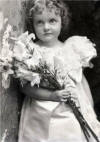
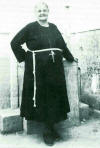
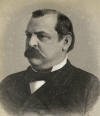
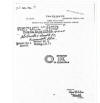




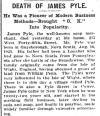
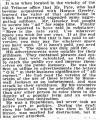
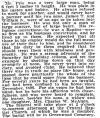

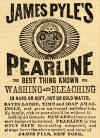













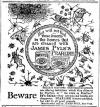


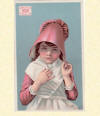

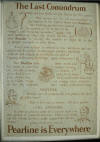
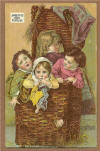

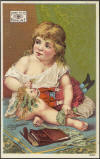
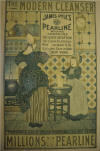
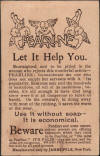
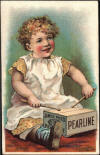
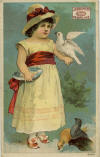

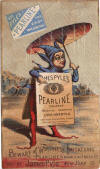
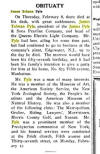
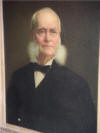


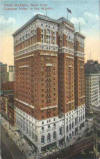
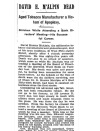



















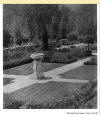












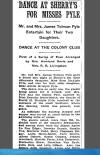
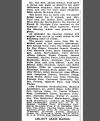
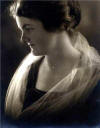
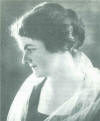



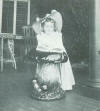
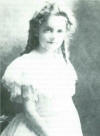



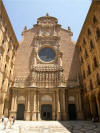

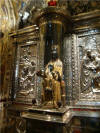


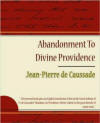
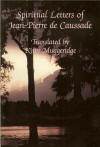
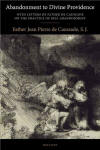
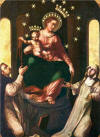

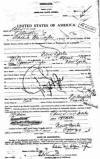
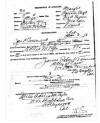

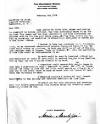


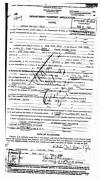
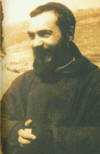
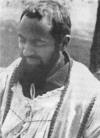
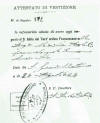
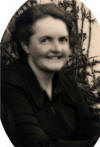
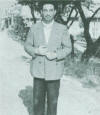


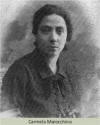

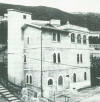





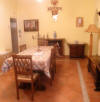
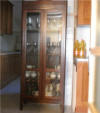






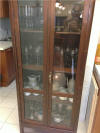

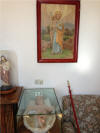
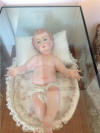
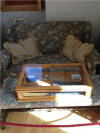

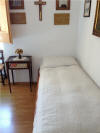




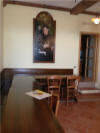
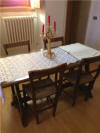
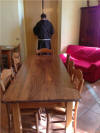









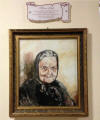




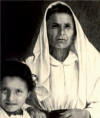
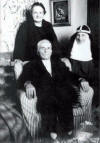


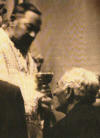







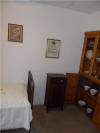
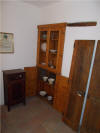


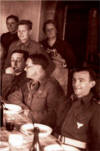

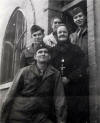





a_small.jpg)
a_small.jpg)
a_small.jpg)









